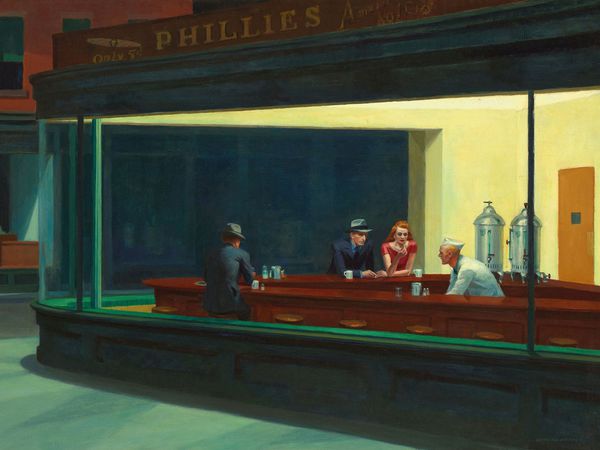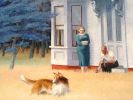Eye For Film >> Movies >> Hopper: An American Love Story (2022) Film Review
Hopper: An American Love Story
Reviewed by: Jennie Kermode

Look at an Edward Hopper painting and you may initially be struck by its realism. The light and colour are striking. The body language and expressions of the people, even when obscured, hint at poignant stories. Look a little closer, however, and the pictures become stranger. Why are city streets so quiet, even in the daytime? Why do the buildings whose interiors we focus on appear to offer no ways in or out?
Hopper’s work is is often celebrated as the apogee of American realism, but in fact it captures a very distinct slice of American life, and then obliquely. This does not make it less interesting but, rather, offers up the artist’s own story for examination in a similar manner to those of this characters. In this film, the always impressive Exhibition On Screen team get to grips with that story and endeavour to open some doors which will give access to fascinated viewers worldwide.

The biographical aspects of the tale unfold in linear order, beginning with the artist’s rather privileged childhood in the town on Nyack in New York State, in a spacious family home with beautiful coastal light which inspired his particular way of seeing the world. He was taken on visits to New York City, giving him the chance to see the work of great artists from an early age, and given sketchbooks to work with as he wandered the streets of his own town – we get to see a few of his early drawings. Also telling are the family photographs, which are full of personality and indicate that he must have come into contact with somebody else who knew how to look at people as he later would.
Less idyllic aspects of life emerge as we hear about him being bullied at school because of his height (he would eventually be six foot five, difficult for a shy man to carry) and about a decade of unrequited love which he experienced during his time in Paris, which has only quite recently come to light. Later, the film looks at his marriage to Josephine Nivison, a fellow artist who worked hard to manage his career yet whose jealousy led to her refusing to let him use any other woman as a model whilst they were together. He is his turn, this film suggests, was not very nice to her.
The essential loneliness of Hopper’s world comes through starkly in his paintings – perhaps more so over time, as his thinly peopled New York City grows more and more empty. The whiteness of it also speaks to his limited social circles; a solitary painting of an African American woman gives her the same blend of agency and mystery as his other characters, suggesting that the issue was not hostility but a failure to notice aspects of life outside the bubble in which he had been raised.
All the great Hopper paintings are featured here, along with some lesser-known ones and an assortment of sketches. The film focuses not just on his human subjects but on his love of architecture, even in a curiously shortened city where the light penetrated to places which it could not, in truth, reach. It addresses his commentary on social issues, more prevalent in his early work, and the increasingly mutable narratives within his paintings. There is also, appropriately for the medium, an exploration of the ways in which he was influenced by cinema, especially Hitchcock and film noir, and his pride at having, in turn, influenced the way that Hitchcock chose and shot the Bates house in Psycho.
A lyrical film which strives hard to capture scenes imbued with similar light, and which is informed by the melancholy tone of the artist’s work, this is an impressive addition to the series and a treat for Hopper’s fans.
Reviewed on: 18 Oct 2022















